yeovil at War
Charles Samways
Died of pneumonia
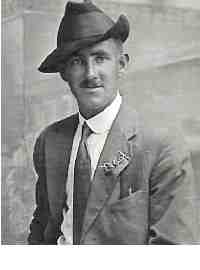 Charles
Samways was born
in Yeovil in
1893, the son of
leather dresser
George Samways
(b 1867) and
Martha née
Dade (b 1868).
In the 1901
census, George
and Martha were
listed at 6
West
Hendford with
their children;
eight-year old
Charles and
daughter Nellie
aged two. Nellie
died the
following year
and George
Samways died in
1918. In the
census of 1911,
Martha, a
dressmaker, was
living at 93
Kiddles Lane
(today's
Eastland Road)
with 18-year old
Charles and his
five-year old
brother
Reginald.
Charles gave his
occupation as a
glove cutter and
most likely
worked at the
glove factory
on the corner of
Kiddles Lane.
Charles
Samways was born
in Yeovil in
1893, the son of
leather dresser
George Samways
(b 1867) and
Martha née
Dade (b 1868).
In the 1901
census, George
and Martha were
listed at 6
West
Hendford with
their children;
eight-year old
Charles and
daughter Nellie
aged two. Nellie
died the
following year
and George
Samways died in
1918. In the
census of 1911,
Martha, a
dressmaker, was
living at 93
Kiddles Lane
(today's
Eastland Road)
with 18-year old
Charles and his
five-year old
brother
Reginald.
Charles gave his
occupation as a
glove cutter and
most likely
worked at the
glove factory
on the corner of
Kiddles Lane.
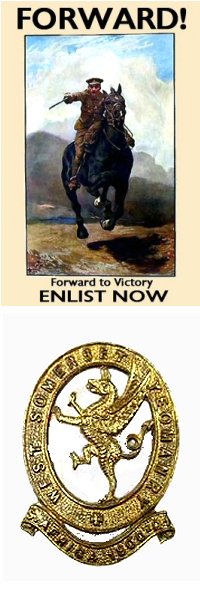 Charles
enlisted in the
West Somerset
Yeomanry
(Service No
1355) at
Taunton. The
date of his
enlistment is
unknown but is
likely to have
been on the
outbreak of war
in 1914.
Charles
enlisted in the
West Somerset
Yeomanry
(Service No
1355) at
Taunton. The
date of his
enlistment is
unknown but is
likely to have
been on the
outbreak of war
in 1914.
At the outbreak of the First World War, the regiment was part of the 2nd South Western Mounted Brigade. It mobilised on 4 August 1914 and moved to Winchester. On 15 August it moved with its brigade to the Colchester area. In September 1915 it was at Thorpe-le-Soken where it was dismounted. Still with the 2nd South Western Mounted Brigade, in September 1915 the regiment left Thorpe-le-Soken for Liverpool. On 24 September it boarded RMS Olympic and sailed the next day. It arrived at Mudros, Greece, on 1 October and on to Suvla Bay on the Aegean coast of the Gallipoli peninsula in European Turkey. The regiment landed in Gallipoli on 9 October and was attached to the 11th (Northern) Division where they were employed digging trenches. In November it was in the firing line, attached to the 2nd Mounted Division and 53rd (Welsh) Infantry Division. On 19 December it was evacuated to Imbros, the largest Turkish island.
In December 1915 the regiment landed in Alexandria to help defend Egypt. In February 1916, 2nd South Western Mounted Brigade was absorbed into the 2nd Dismounted Brigade. It served on Suez Canal defences and part of the Western Frontier Force. On 4 January 1917, the regiment was converted at Ismaïlia, Egypt to form the 12th (West Somerset Yeomanry) Battalion, Somerset Light Infantry and 2nd Dismounted Brigade became 229th Brigade in the 74th (Yeomanry) Division. At this time Charles' Service Number changed to 295586 and he served in the Lewis Gun Section of D Company, 12th (West Somerset Yeomanry) Battalion, Somerset Light Infantry.
With the 74th Division, it took part in the invasion of Palestine in 1917 and 1918. It fought in the Second and Third Battles of Gaza (including the capture of Beersheba and the Sheria Position). At the end of 1917, it took part in the capture and defence of Jerusalem and in March 1918 in the Battle of Tell 'Asur. On 3 April 1918, the Division was warned that it would move to France and by 30 April 1918 had completed embarkation at Alexandria.
On 7 May 1918, 12th (West Somerset Yeomanry) Battalion, Somerset Light Infantry landed at Marseilles, France with 74th (Yeomanry) Division. It served in France and Flanders with the division for the rest of the war. From September 1918, as part of III Corps of Fourth Army, it took part in the Hundred Days Offensive including the Second Battle of the Somme (Second Battle of Bapaume) and the Battles of the Hindenburg Line (Battle of Épehy). In October and November 1918 it took part in the Final Advance in Artois and Flanders.
It is not clear what happened to Charles but he was clearly back in England when he died of pneumonia on 6 November 1918. He was aged 25.
Charles was buried in Yeovil Cemetery, Grave B306, and his name is recorded on the War Memorial in the Borough.
gallery
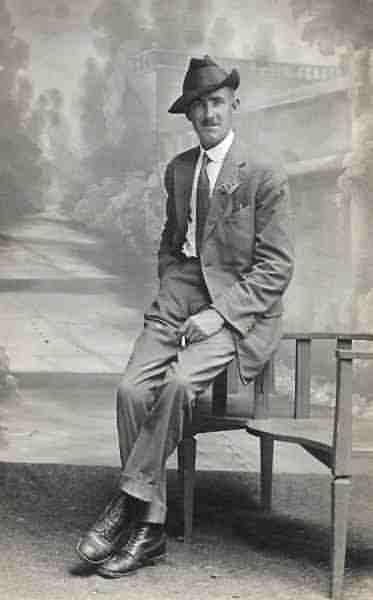
Courtesy of
Cliff Johnson
A studio portrait of the debonair Charles Samways.
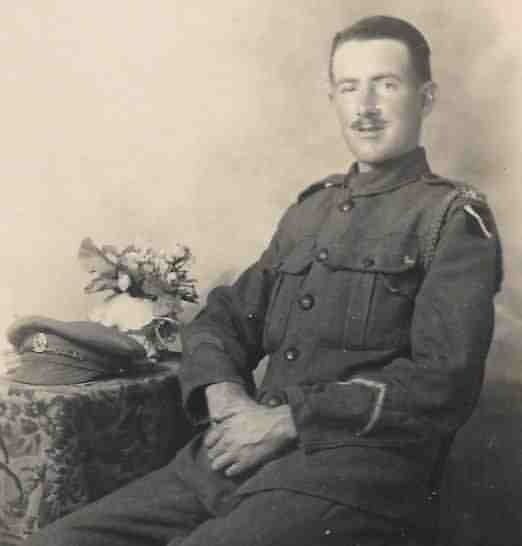
Courtesy of
Cliff Johnson
Another studio portrait of Charles Samways in uniform. The cap badge and shoulder badge are those of the West Somerset Yeomanry, but I can't identify the divisional flash on his shoulder.
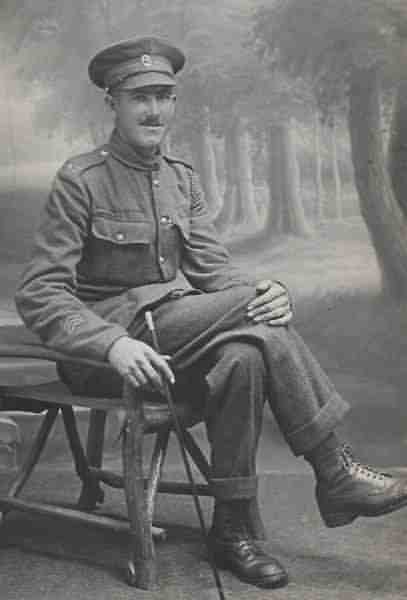
Courtesy of
Cliff Johnson
Yet another studio portrait of Charles. On his right sleeve, just above the wrist, are three 'Overseas Service' chevrons. Since they all appear to be the same colour, they date from 1915 onwards (the 1914 Overseas Service chevron was red, followed by subsequent chevrons in blue for later years). This therefore probably dates this, and the previous, photograph to 1917.
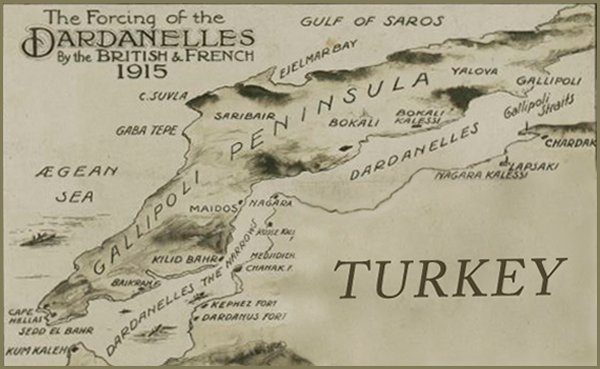
A postcard dated 1915 showing a map of the Dardanelles Campaign.
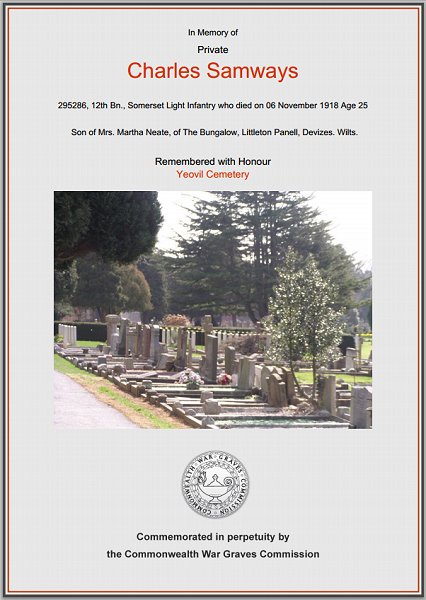
The Commonwealth War Graves Commission certificate in memory of Charles Samways.
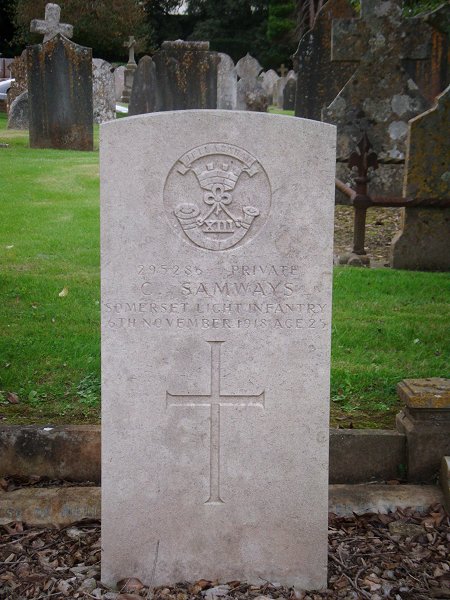
Charles Samways' headstone in Yeovil Cemetery.